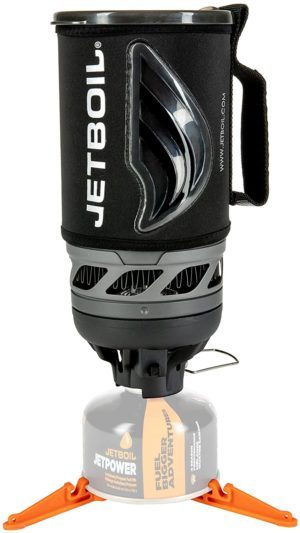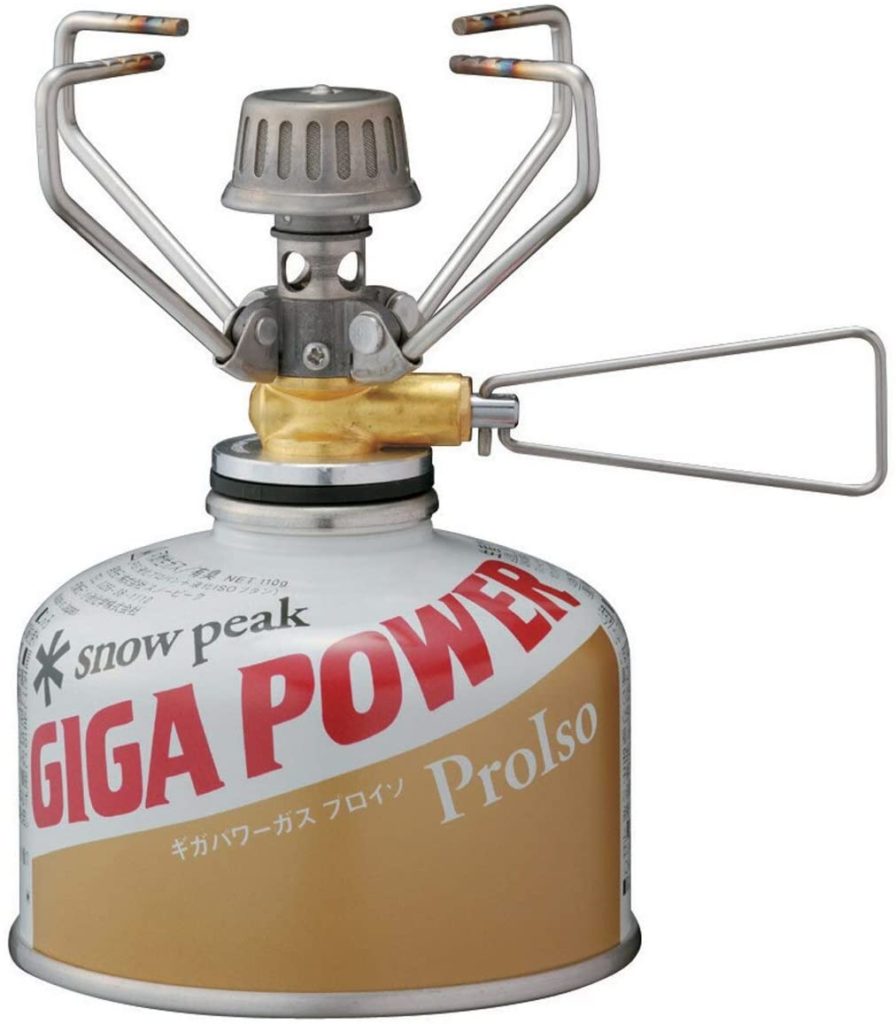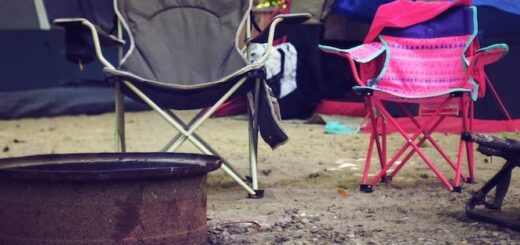Best Backpacking Stove Options for High Altitude Hiking
by Brandi M ·
This page may contain affiliate links. For more information, see our "About Us" page.
Best Backpacking Stove Options for High Altitude Hiking

There are several things to take care of when you are on a backpacking trip. One thing no backpackers can underestimate is the need for food. Packed crisps, biscuits, and granola bars are great for snacking and can keep you satiated for long. But they are not enough to fuel your body throughout the trip. At the end of the day, you will need a stove to cook something, and there are many light-weight stoves available on the market. Portable and fully functional stoves are necessary for backpacking. But did you know that you need the right stove for backpacking at high altitude as well? The lower atmospheric pressure on mountains greatly affects the cooking time of food.
Canister based stoves and liquid-fuel stoves are best for high altitudes and harsh conditions. On the other hand, you can make do with conventional light-weight stoves, but even this depends on what area and altitude you plan to go. Let us have a look at the best stove options that are light-weight and work well at high altitude.
Editor’s Note: It’s important to understand the ins and outs of high altitude cooking, as well as the safety involved.
1. Jetboil Flash
This stove is the ultimate all-in-one cooking system combining the burner and cooking vessel. Normally the burner takes 100 seconds to boil 2 cups of water. At high altitude, it will take longer, but it is still quicker than most backpacking stoves.
Not only does Flash provide less cooking time, but it also has additional features too. The cooking cup has a cozy insulating layer that prevents overheating and damage to the cup. The bottom cover of the vessel serves as a measuring cup. This is a great multi-purpose cooking stove for backpacking.
If you forget the food thermometer, then don’t worry. Jetboil Flash has a heat indicator that changes color as the internal temperature of the food rises or drops. This will give you a fair idea of when your food is ready.
Jetboil has several useful accessories to offer, including a coffee press, cooking pot, frying pan, and much more. All of the accessories do not come with the Flash. If you go backpacking very often, you may want to get all the accessories.
This stove is slightly heavier and pricier than most backpack stoves, but its multi-purpose features give an excellent cooking experience. Moreover, the speed, sturdy build, and convenience make this stove exceptional for backpacking at higher altitudes.
Price- $109.95
Weight- 13.9 oz
2. MSR WhisperLite
MSR WhisperLite is one of the lightweight and smallest liquid fuel stoves in the market. It weighs only 11 pounds. It is much quieter than most liquid-fuel stoves. It is simple to use and easy to maintain. One interesting feature is the Shaker Jet technology. The Shaker Jet allows easy and simple cleaning of the stove, which greatly helps in maintenance.
The overall stainless steel and brass construction make the stove sturdy and durable. The stove contains a fuel pump, stuff sack, windscreen, heat reflector, and instruction manual. There are small parts for the assembly of the stove.
This stove is great in terms of portability, maintenance, and quick cooking time. However, it lacks the simmer control feature. The stove doesn’t have its own fuel bottle.
Price- $89.95
Weight- 11.5 oz
3. Snow Peak GigaPower 2.0
This canister-fuel stove is lighter on your backpack and pocket as well. It is compact, ignites quickly, and has a fully adjustable burner. The built-in igniter gives out an electric spark when you turn on the gas. You don’t have to use a matchstick to turn on the flame.
The stovetop opens into an isobutane canister. The overall material is solid aluminum. There are four flat pot supports that keep the pot stable. The stove takes 4 minutes and 48 seconds on average to boil 1 liter of water.
The stove performs excellently in cold temperatures and high altitudes. You can reduce the stove into a real-simmer for cooking meals.
One downside of this stove is that it doesn’t come with its own fuel. You have to buy the fuel separately. But considering the price and other features, we won’t let this factor affect the credibility of this stove.
This stove is a compact canister stove, which is very convenient to use. Its useful features include automatic igniter, great simmer control, and fast boiling time. This stove is a bit bulkier and not too great for windy conditions.
Price- $50
Weight- 3.2 ounces
4. MSR Dragonfly
Rounding out our list of best backpacking stove options for high altitude hiking, the MSR Dragonfly is the latest upgrade on MSR backpacking stoves. This multi-fuel stove is a great combination of efficiency and convenience. The weight is a bit bulkier than most stoves because of its many features and heavy build. But the fuel pump is lightweight, which helps to provide pressure quickly while cooking the food. The pump also has a special poppet valve, which prevents gas from leaking when you remove it from the stove.
This stove is versatile in burning all kinds of fuel. It can burn white gas, kerosene, diesel, automotive gas, aviation gas, naphtha, and Stoddard solvent. Though there is an MSR fuel bottle, you have to buy it separately.
This stove is great for backpacking at altitudes above 3000. It is best to cook for more than two people. Its heavy built, fuel pump, automated ignition provides lots of conveniences. Plus, its versatility in burning all kinds of fuel means that it is leagues above other stoves from MSR.
Price- $139.95
Weight- 20 oz
FAQs - Frequently Asked Questions
How altitude affects cooking?
The higher you go, the gravity pull increases, and the atmospheric pressure decreases. It happens because the air on higher altitudes has less oxygen, and so the atmospheric pressure is also low. The moisture quickly evaporates from the food. When you are cooking or heating food at less atm. pressure, the heat needs more energy to transfer from the stove to the pot or pan.
Similarly, if you are boiling water, the water molecules in the pot need more energy to escape from the pot. At higher altitudes, there are fewer air particles. The decreased air pressure takes longer for the food to cook or water to boil. At altitudes above 3000, the cooking time and temperature usually vary.
Which types of stoves are best for high altitude?
Canister stoves, liquid, and multi-fuel stoves are better for cooking at high altitudes. Among these, the Liquid fuel stove is the best to cook food at high altitudes. The liquid fuel stove has a fuel bottle that regulates the pressure. As you cook, you pump the fuel bottle providing maximum pressure for the food to cook quickly.
The canister stove works in a similar way. But it generates the output from the pressure inside the canister. When the temperature drops, the pressure drops too. As the temperature on high altitudes is usually low, there isn’t any way to increase the pressure. When you have a liquid fuel stove, you can enjoy a hot meal or beverage despite the frigid temperature of winter.
However, canister stoves are lightweight and best for backpacking. Depending on where you are going, you have to choose between portability and fast cooking time of the stone.
Is the food thermometer necessary for cooking at high altitudes?
Though you can cook without a food thermometer, it’s still a very useful accessory for cooking on high mountains. Using a food thermometer is the only way to check that the food has reached a safe internal temperature. When cooking at high altitudes, it is easy to overcook foods such as meat, poultry, fish, and casserole. To prevent overcooking, use a food thermometer to check the internal temperature of the food.
Best Backpacking Stove Options for High Altitude Hiking - Conclusion
There are lots of things to consider when buying a backpacking stove. One important feature that people tend to ignore is cooking at high altitudes. Many backpacking stoves that are just unfit to cook at higher altitudes, so you need to choose accordingly. Some features to look for, besides ease-of-use, are fast cooking time, fuel bottle, and easy cleaning. With these features in mind, it’s easy to see why we’ve chosen those on the list above as the best backpacking stove options for high altitude hiking. If you’re looking for more backpacking supply ideas, check out our article “DIY Mini First Aid Kit Guide for Safety” Safe trips, and happy travels!







